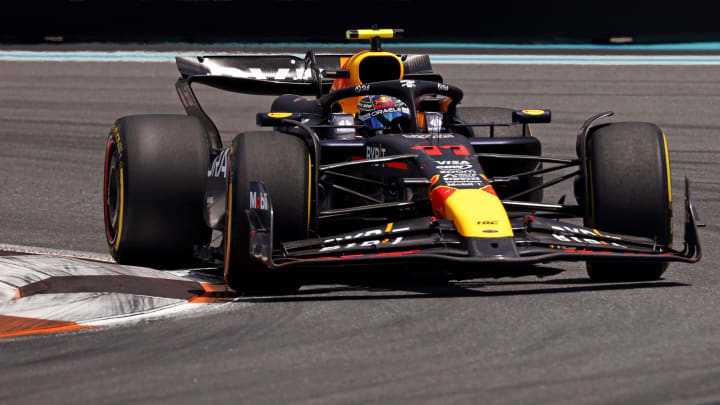Exclusive: Current F1 Regulations Questioned by Former Driver- 'It Becomes Problematic'

The world of Formula One is ever-evolving, with regulations constantly being updated to improve the sport, both in terms of performance and viewer enjoyment. One of the most significant changes in recent years was the introduction of ground effect regulations in 2022. As we approach the dawn of a new era in 2026 with more hybrid-focused regulations, it’s crucial to reflect on the successes and challenges of the current rules which, so far, have mostly been dominated by Red Bull and their drivers Max Verstappen and Sergio Perez.
Since their implementation, the current regulations have aimed to enhance the quality of racing by allowing cars to follow each other more closely, thus increasing overtaking opportunities. Ground effect aerodynamics, which utilizes aerodynamic principles to create downforce by shaping the car’s underbody, has been a game-changer. However, as with any major regulatory shift, there have been both triumphs and challenges.
Talking with Sports Illustrated, former F1 driver Mark Blundell shared his insights on these regulations, offering a unique perspective on their impact and areas for improvement.
"I definitely think there's been an improvement in the racing, I think that's been quite plain for everyone to see," he told me. "Ground effect cars are always going to be difficult because of the nuances involved in aero in Formula One. More than anything it's about cars tracking each other and that disturbed air which is a big question mark.
"Clean air is great but not everybody gets the advantage of having that, so it's whether you get dirty air off another car or a couple cars in front, it becomes problematic.
"But Formula One is such that every time they change the regulations, and they decide something is going to be improved upon, the clever guys out there designing the cars decide to make it even more difficult for their competitors next door. They come up with something that takes the regulations to the next step in so much that yes, it probably is more efficient, but it makes it far more difficult to take overtake, because they've been clever in how they've done their aero work.
"Overall, the GE regulations have been positive, but improvements could be made. It's such a fine line between balancing performance and making it entertaining for the viewing fans to watch."
Blundell’s comments underscore the sheer challenge of maintaining the balance between competitive racing and entertainment. The improvement in racing quality under the GE regulations is evident, as fans have witnessed more thrilling races and tighter battles on track especially more recently as it looks as though McLaren, Ferrari, and Mercedes are slowly getting the hang of their cars. However, the issue of disturbed air remains a significant hurdle, but a reduced one compared to the likes of 2021.
Additionally, the ingenuity of F1 teams often turns regulatory changes into opportunities to outsmart competitors, sometimes counteracting the intended benefits. As Blundell points out, advancements in aerodynamics, while enhancing efficiency, can inadvertently make overtaking more challenging, as teams exploit loopholes to gain an edge.
Looking ahead to the 2026 hybrid-focused regulations, it’s clear that continuous innovation is vital for the sport's progression, but are these new regulations coming too early?
Lando Norris questioned just this:
“I think you're not going to have days like today again,” said Norris after the Canadian Grand Prix. “You're not going to have days like the last few weeks probably in ‘26, ‘27, ‘28, or pretty much like ‘28, ‘29. So, it's how it's always been.
“Every time there's a regulation change, there's big gaps. And even at the end of the last era, ‘21, things were getting closer again. You had still Red Bull against Mercedes, and everyone was getting closer. And then everything spread out again.
“Red Bull had their time, and now it seems like we've been able to catch up. So just as we're getting there, and I think probably looking ahead to next year already, next year should be an exciting year for everyone, just from first to last. I think it's going to be exciting. But then that's all going to go in ‘26.”
“There might be some benefits in the race for those [2026] regulations, there might be some things that are worse,” he admitted. “The type of racing you're going to get is probably quite different. So, it's complicated.
“It's not a simple answer. I don't know the answer, at the same time. I don't think anyone knows exactly how it's going to pan out.
The ongoing challenge lies in refining these regulations to ensure that they not only promote thrilling and fair competition but also keep the spirit of innovation alive. As F1 gears up for the next regulatory era, the insights from experienced professionals like Blundell will be invaluable in shaping the future of the sport.
